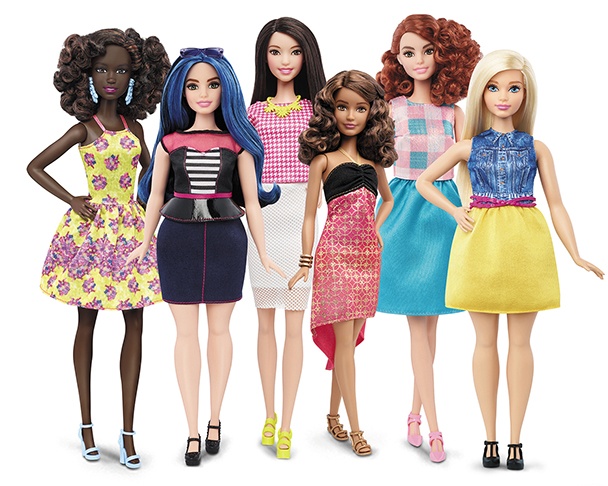Digital Coupons, New Barbies Make Headlines
by February 15, 2016 12:00 am 195 views

The New Barbie Reflects
Body and Cultural Diversity
Barbie is a cultural icon, at least in the United States. For many little girls, receiving their first Barbie is a rite of passage. Depending on the whim of her owner, Barbie can be a teenager, college student or a young adult woman making her way in the world. When a girl decides that she is too old to care for a baby doll, dressing a fashion plate is a logical next step.
Increasingly, however, Barbie and Mattel Inc., her manufacturer, have come under criticism. Many have noted that the traditional Barbie doesn’t reflect the way most women look. Some have even argued that she encourages young girls do develop an unhealthy body image.
Mattel responded to the criticism by creating a diverse line of Barbies that feature different skin tones, body types and hairstyles. What has most caught media attention, however, is the addition of different body types. Consumers can now choose between an “original” Barbie-body, petite, tall and curvy.
“As a busy mother of a 6-year-old who also tries to stay healthy with exercise and eating well, it’s extremely challenging to talk about body image with some of the dolls my daughter wants to play with,” said Jessica Hendrix, president and CEO of Saatchi & Saatchi X in Springdale. “Emotionally, I want to give her great options to play without the distraction of unrealistic body image expectations. Moms want something which encourages confidence and play without guilt, and Barbie is providing a great platform to start that conversation.”
While some observers have dismissed the new body types as a marketing scheme, others believe that the change is positive.
According to a recent article on the media platform Triple Pundit, Robert Holloway — a professor of psychiatry and pediatrics at the Children’s Hospital Los Angeles and USC Keck School of Medicine — supports the move.
“This expansion in choices can be empowering for children,” he said, according to the piece. “I think it’s great that kids will have more choices for their dolls. We express a lot with our choice of objects, especially such personal objects as dolls. I’m glad that kids will have more choices and hope their parents and peers will allow them to make their choices without too much pressure.”
He added, “Making a choice will always be met with scrutiny by others. Sometimes our choices are supported and sometimes they’re discouraged. This is a part of life we all must navigate.’”
Mattel reports that the new “Fashionistas” Barbies will be released “in stages,” presumably throughout 2016.
RetailMeNot: Digital Couponing
Is Where Consumers Are At
Promotion trends come and go, but couponing is here to stay, according to a study by RetailMeNot Inc. and Placed Inc. Even though couponing is more than 125 years old (Coca-Cola is said to have been the first manufacturer to use coupons as a promotion), it remains a strong incentive for many consumers.
The numbers are clear:
• Eighty-five percent of consumers search for non-grocery coupons before going shopping.
• More than three out of five consumers surveyed indicated a preference for coupons over other promotion types. The second most popular promotion is the rebate.
• Over 42 percent indicated that they search for coupons using a mobile app, though just under 36 percent still search print sources. Only 16.8 percent use a desktop computer for couponing.
The study sponsors believe that these numbers are important for retailers.
“Coupons are no longer limited to Sunday circulars; however, coupons are still the number one incentive that consumers prefer,” Marissa Tarleton, chief merchandising officer for RetailMeNot said, according to a press release. “Mobile has made coupons an on-demand activity, with nearly half of consumers preferring to look for coupons via a mobile app, the number one choice for conducting searches. Retailers who embrace this change in consumer behavior to deliver offers at all stages of the planning process are poised to capture sales in the moment.”
Despite the popularity of mobile couponing, suppliers and retailers alike should be cautious before hiring a developer to design a custom app. The survey also showed that respondents generally only have two shopping apps on their phone. A wiser move may be to partner with popular app developers to make coupons available to customers who are already using the application on their mobile device.
The study is available for free download here.
